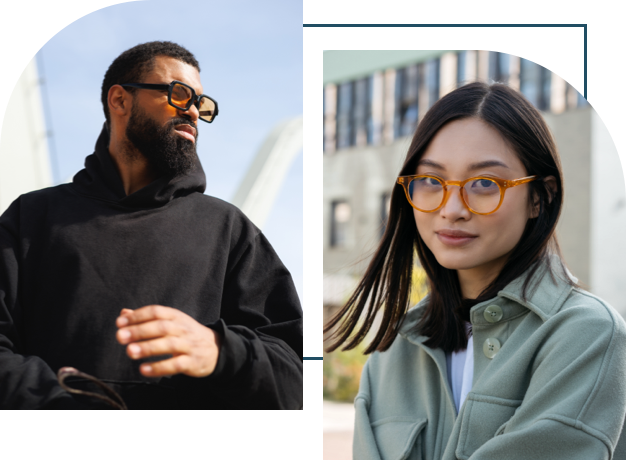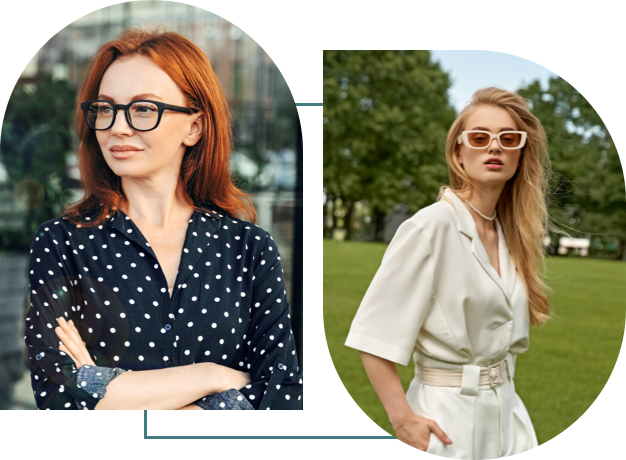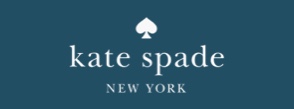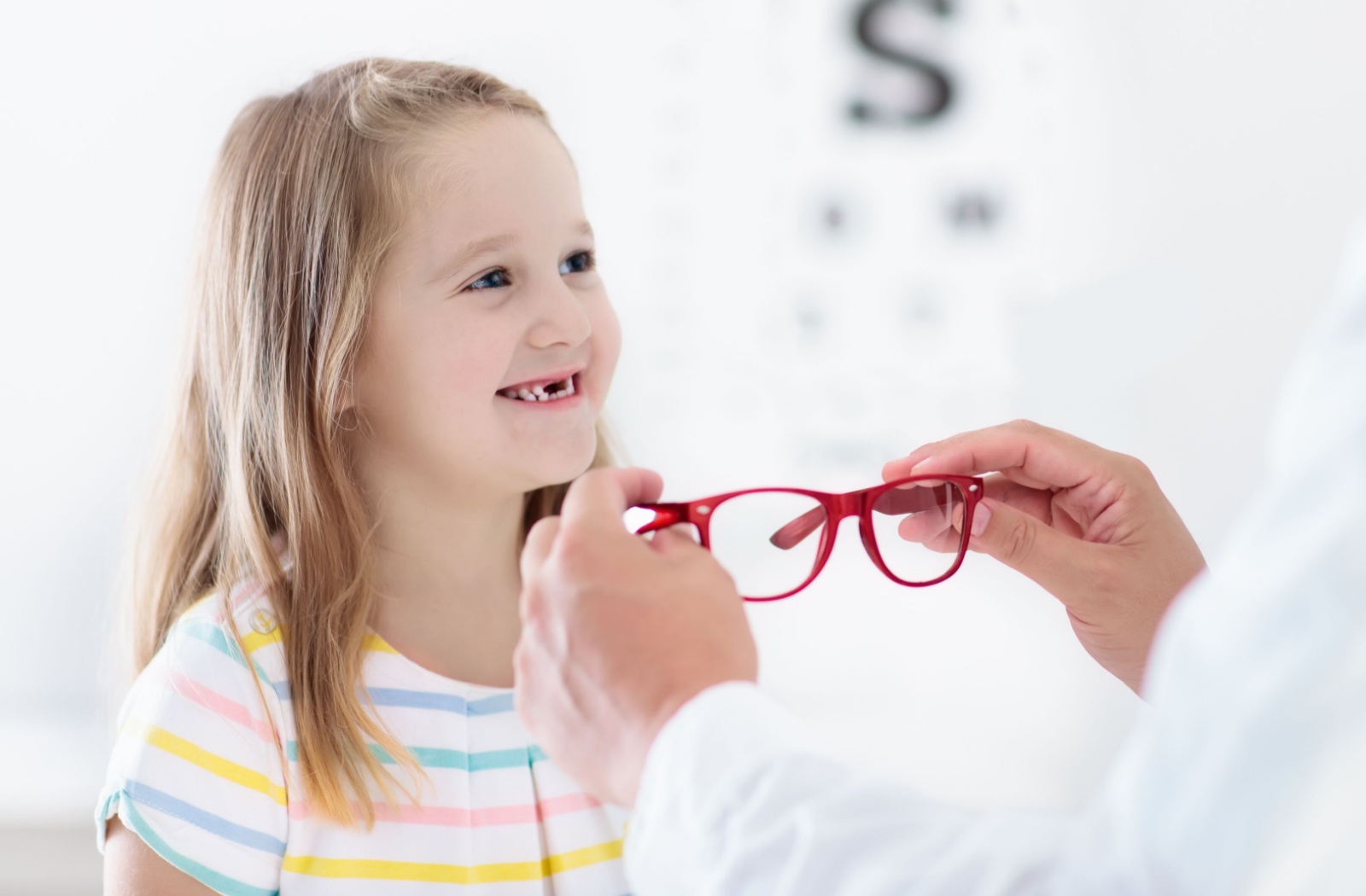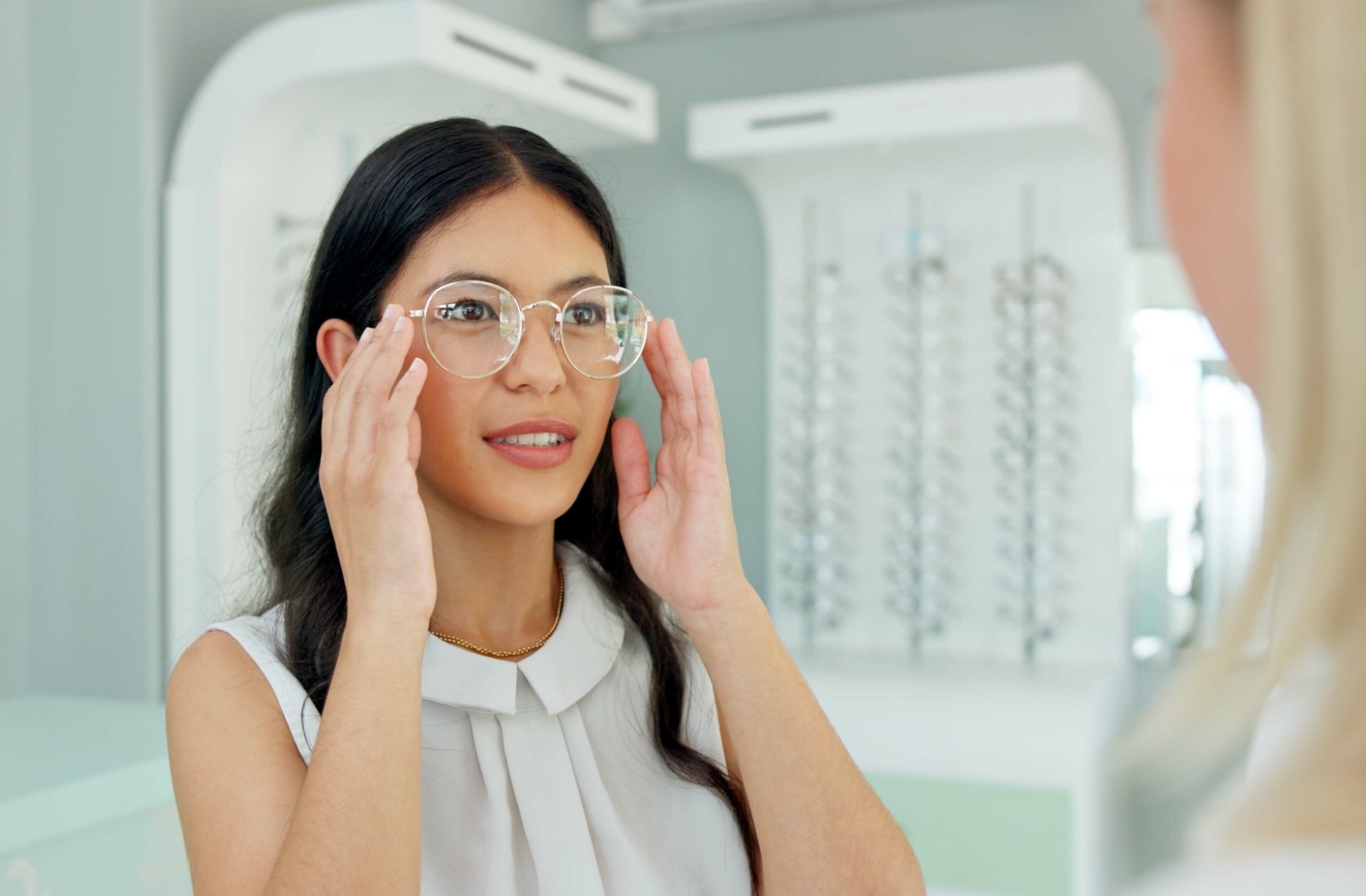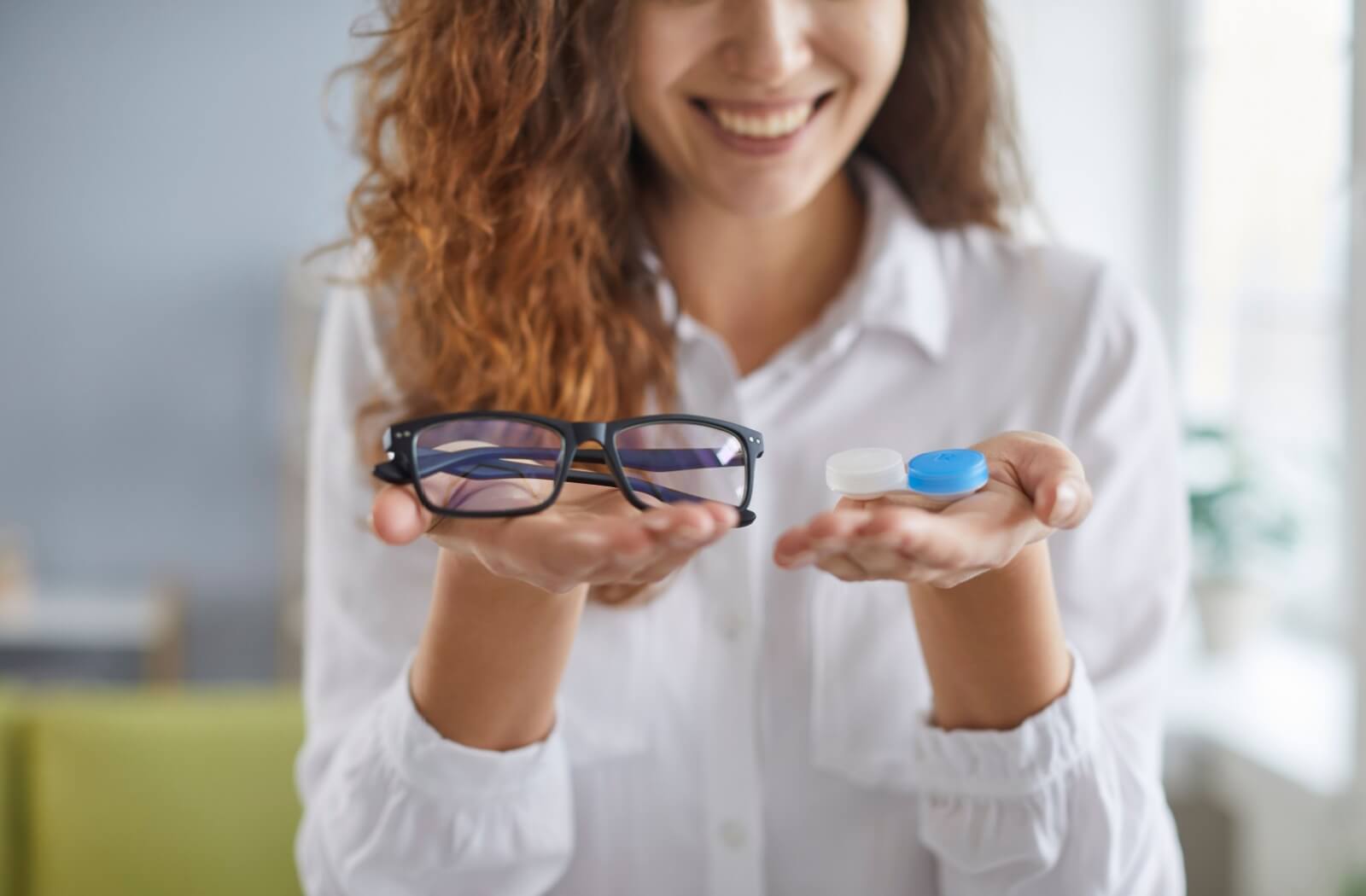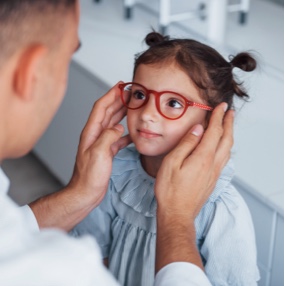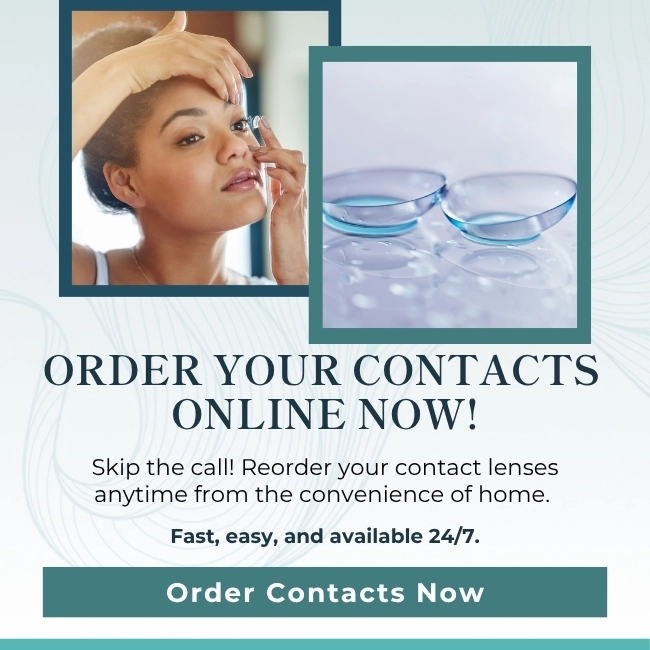Myopia, often called nearsightedness, happens when light focuses in front of the retina instead of on it, making distant objects appear blurred. It often shows up in childhood, and as years go by, the prescription can progress.
But beyond blurry distance vision, myopia can carry more serious long-term health risks. People with moderate to high myopia face a significantly increased risk of eye diseases such as glaucoma, retinal detachment, and myopic maculopathy—conditions that can threaten permanent vision loss if not managed properly.
For students, having myopia might mean squinting to read the board; for adults, it could show up while driving or straining to watch a movie in the back row. Understanding what myopia glasses do, what other choices exist, and whether glasses are the right route can help you make a thoughtful decision for yourself or someone you care about.
What Is Myopia?
Myopia is a vision condition in which distant things look fuzzy because the eye’s shape causes light to land in front of the retina. It usually starts in childhood and can progress gradually depending on growth, genetics, and lifestyle factors. Myopia is expected to affect more than 50% of the world’s population by 2050. Since campuses, classrooms, and screen-heavy routines are common in everyday life, being mindful of myopia’s progression matters.
How Myopia Affects Daily Life
- It can make reading from a distance difficult, even if close-up vision remains clear
- It may increase the risk of eye strain or headaches with prolonged screen use
- If left uncorrected, myopia can affect performance in school or at work, and even safety during activities like driving
What Are Myopia Glasses?
Myopia glasses correct vision by using concave lenses, that is, lenses that are thinner in the centre and thicker at the edges, to bend light rays so they land on the retina. The strength of these lenses is expressed in negative diopters (for example, – 2.00), with higher numbers representing stronger prescriptions.
Lens Styles You Might Encounter
- Single-vision lenses focus on distance vision, which is the main need for most people with myopia.
- Progressive lenses may serve users who also require reading correction by offering multiple viewing zones in one lens.
- Myopia-control lenses are designed specifically to help slow progression in growing eyes, which remains an emerging area in vision care.
Are Myopia Glasses Worth It?
For most people, the clarity and comfort provided by myopia glasses make them a practical and functional choice. Since myopia typically doesn’t correct itself over time, a well-fit pair of glasses can improve clarity in school, work, and social settings.
When Glasses Can Feel Like a Smart Choice
- They’re non-invasive and easy to fit right in the office.
- For wearers that prefer the cosmetic appearance of glasses.
- They can offer extras, like anti-reflective or blue filter coatings for screen time, or even slimmer, lighter designs that feel more comfortable.
When Alternative Options Might Be Considered
- Families looking to manage progression could explore DIMS lenses, specialty contact lenses, and low-dose atropine drops.
- When near and far vision both need correcting, especially for older adults, progressive lenses can provide a seamless experience without flipping between glasses.
Other Treatment Options Besides Glasses

In addition to standard myopia glasses, several other treatments are available that aim to slow myopia progression and support long-term eye health.
- DIMS (Defocus Incorporated Multiple Segments) Lenses: Spectacle lenses incorporating built-in segments that create peripheral defocus, helping to slow the eye’s lengthening while preserving clear vision for daily activities.
- MiYOSMART Lenses: Glasses with an innovative light-focusing design that helps reduce the elongation of the eyeball, allowing clear vision while managing myopia progression.
- MyoPersona Lenses: Custom-designed lenses tailored to each child’s prescription and eye shape, balancing comfort with targeted myopia-control benefits.
- MiSight 1 Day Contact Lenses: Soft, daily-wear lenses clinically shown to slow myopia progression by about 59% in children, offering both comfort and easy handling for young wearers.
- Orthokeratology (Ortho-K): This non-surgical treatment involves wearing specially designed rigid gas-permeable contact lenses overnight to gently reshape the cornea. Ortho-K provides clear daytime vision without glasses or contacts and has been shown to effectively slow the progression of myopia in children.
- Low-Dose Atropine Eye Drops: A minimally invasive, drop-based treatment shown in studies to reduce the rate of myopia progression in children, offering an alternative for families seeking an easier option.
Choosing any of these options isn’t just about avoiding thicker glasses; it’s about protecting long-term vision. The earlier these tools are introduced, especially in children at higher risk (due to family history, early onset, or rapid prescription changes), the greater the chance of slowing or minimizing complications associated with high myopia later in life.
A Thoughtful Approach to Choosing Myopia Glasses
Deciding whether to go with glasses or explore other treatments can feel less overwhelming when guided by these ideas:
- Comfort and fit matter, especially for kids or teens who need to wear them all day.
- Lens material can make a difference: Trivex for impact resistance, or high-index options for a thinner, lighter lens in stronger prescriptions.
- Coatings, like anti-glare or UV protection, can support long hours in front of screens or out in the sun.
Working with a trusted optometric practice can help navigate those details, from frame choices to preferred lens benefits. It’s important to keep a close eye on progression, especially for young myopes.
Myopia in Children & Teens
In younger patients, myopia can interfere with classroom learning, sports, and hobbies. Glasses help with clarity, of course, but there’s growing interest in combining glasses with other strategies, like contact lens. Regular eye exams are key in tracking how prescriptions change and deciding the best approach.
Why is this so important? Because children whose myopia progresses unchecked into moderate or high levels are more likely to experience serious complications in adulthood, such as retinal damage, glaucoma, maculopathy, etc. Furthermore, stronger myopic prescriptions decrease your chances as a potential LASIK candidate. The earlier myopia control is introduced, the better chance we have to reduce long-term risks and preserve lifelong eye health.
Clarity Optometry: A Community-Focused Touch
Myopia glasses are widely recognised as a practical and helpful choice. Whether for a student, a family member, or yourself, they offer a safe, effective way to bring clarity to your view. But beyond glasses alone, other options exist; some targeting progression, others focusing on comfort or convenience. Clarity Optometry & Vision Care offers thoughtful, technology-empowered eye care in a friendly, community-minded setting. Book an appointment with us and see how we can support your choice of glasses or explore additional care paths that may fit your lifestyle and vision needs. Visit clarityeyedocs.ca or mymyopia.ca for more information.








